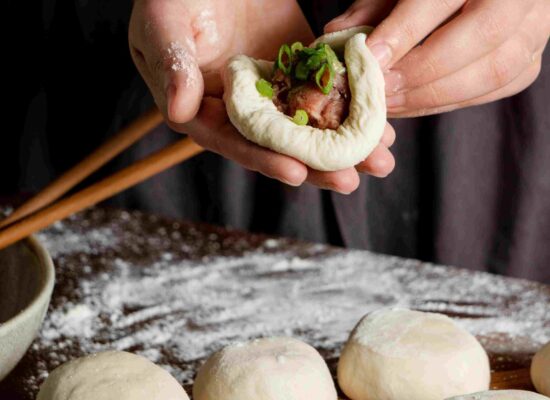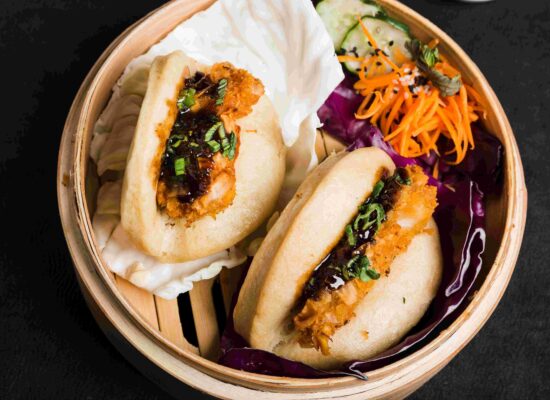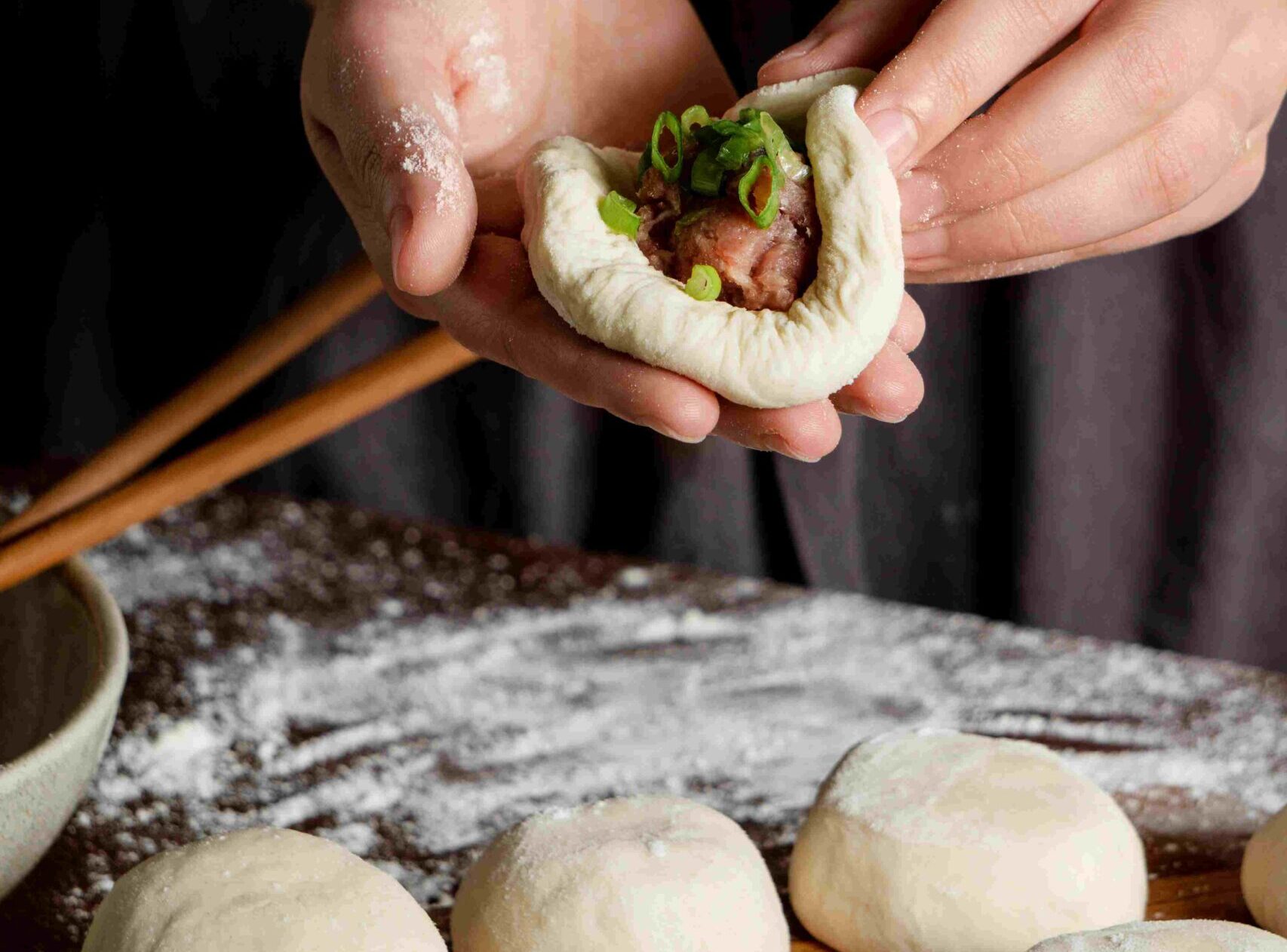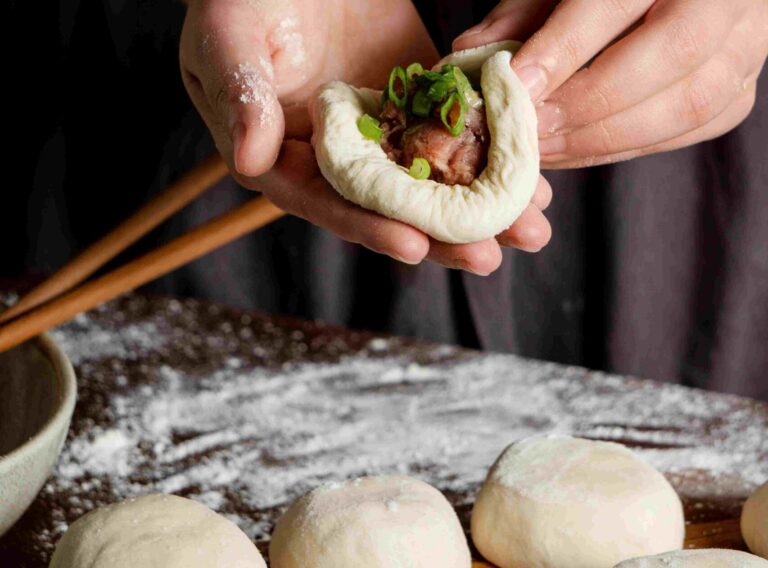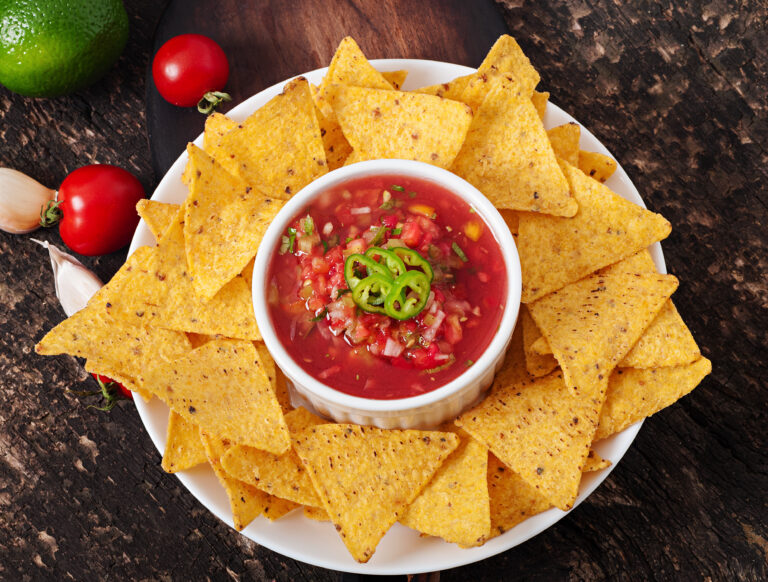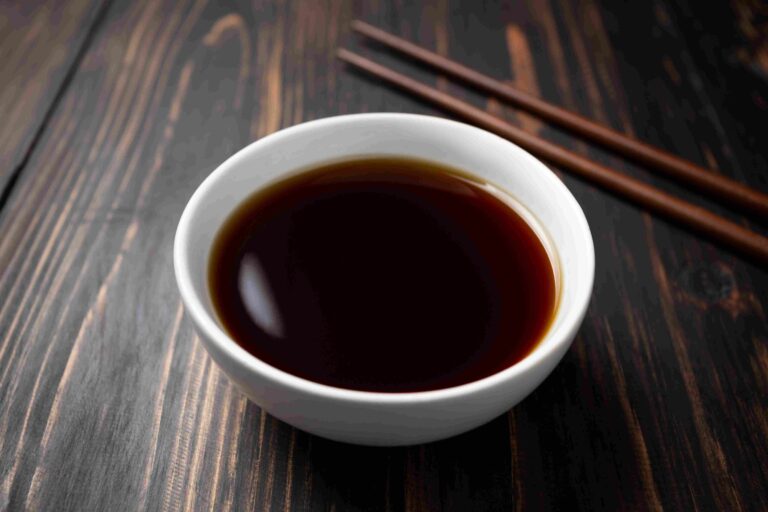Bao buns, also known as “baozi,” are a Chinese street food favorite, loved for their soft, fluffy texture and endless filling options. These buns are usually steamed, creating a light, pillowy bun that pairs beautifully with savory or sweet fillings. Mastering homemade bao buns can elevate any home-cooked Chinese food experience. Let’s dive into 10 essential tips for making the perfect bao buns, so you can recreate this delicious staple in your own kitchen.
Why Bao Buns Are a Must-Try in Chinese Cuisine
Bao buns are a versatile Chinese food that can be enjoyed as a snack, appetizer, or main dish. From traditional pork fillings to vegan-friendly options, bao buns offer something for everyone. The popularity of bao buns has even led to modern twists like Korean-inspired fillings and fusion flavors. Here’s everything you need to know to create bao buns that rival any restaurant version.
Ingredients for Bao Buns
For these bao buns, we’ll start with simple, accessible ingredients. This recipe serves as a base that you can customize with your preferred fillings and flavors.
Dough Ingredients:
- 3 ½ cups all-purpose flour
- 2 ¼ teaspoons active dry yeast
- ¼ cup sugar
- 1 cup warm water
- 1 tablespoon vegetable oil
- 1 teaspoon baking powder
Instructions for Making Bao Buns:
-
Prepare the Dough:
- In a mixing bowl, combine warm water and sugar, stirring until dissolved. Add the yeast and let it sit for about 10 minutes until it becomes foamy.
- Add the flour, baking powder, and oil. Mix well until a dough forms. Knead the dough on a floured surface for 10 minutes or until smooth and elastic.
-
First Rise:
- Transfer the dough to a lightly oiled bowl, cover it with a damp cloth, and let it rise for 1-2 hours, or until it has doubled in size. This rise ensures that your bao buns will be light and fluffy.
-
Shape the Bao Buns:
- Divide the dough into small, equal portions and roll each into a ball. Flatten each ball with a rolling pin to form a disc. Fold each disc in half to create the signature bao shape.
-
Second Rise:
- Arrange the shaped bao buns on parchment paper, cover them with a cloth, and let them rest for another 20-30 minutes. This step adds extra fluffiness to your buns.
-
Steam the Bao Buns:
- Set up a steamer and bring water to a boil. Steam the bao buns for 10-12 minutes until they are puffed up and cooked through. Avoid lifting the lid during steaming, as this can cause the buns to deflate.
Filling Ideas for Bao Buns
The beauty of bao buns lies in their versatility. Here are a few traditional and modern filling ideas to inspire you:
- Char Siu Pork: A classic filling with sweet, marinated pork that melts in your mouth.
- Mushroom and Tofu: A vegetarian option with earthy flavors and a bit of crunch.
- Kimchi Fried Rice: A fusion option with spicy, tangy kimchi and rice.
- Chicken Teriyaki: A Japanese-inspired filling that balances sweet and savory.
Essential Tips for Perfect Bao Buns
Tip 1: Use Fresh Yeast
For the best texture, ensure your yeast is fresh and active. This is the key to getting bao buns that are airy and soft.
Tip 2: Knead Well for Elastic Dough
Kneading helps develop the gluten in the dough, making it elastic and smooth. This elasticity is crucial for achieving the signature soft texture of bao buns.
Tip 3: Allow Two Rises for Fluffiness
The double rise allows the dough to develop more air pockets, creating that fluffy, pillowy texture bao buns are known for.
Tip 4: Steam with a Damp Cloth
Place a damp cloth over the steamer lid to prevent condensation from dripping onto the buns, which helps them maintain a smooth, even surface.
Tip 5: Experiment with Fillings
While traditional fillings like Char Siu are delicious, bao buns are highly adaptable. Feel free to explore modern flavors like Sweet and Sour Chicken, Kung Pao Chicken, or even vegetarian options like marinated tofu and Bean Sprouts.
Tip 6: Pre-Cut Parchment for Non-Stick Steaming
Cut small squares of parchment paper to place under each bao bun. This prevents sticking and makes cleanup easier.
Tip 7: Avoid Overcrowding the Steamer
Give each bao bun space to expand by placing them about 1 inch apart. Overcrowding can lead to uneven cooking and misshapen buns.
Tip 8: Control the Steam Temperature
Keep your steam at a steady, medium-high temperature. Too much heat can make the buns tough, while too little can result in undercooked dough.
Tip 9: Try Different Shapes
For a fun twist, try shaping your bao buns in different ways. You can make open-faced buns, round buns, or even spiral shapes for a unique presentation.
Tip 10: Serve Fresh for Best Flavor
Bao buns are best enjoyed fresh, straight from the steamer. If you need to store them, let them cool and store in an airtight container for up to 2 days. Reheat by steaming for a few minutes to restore their fluffy texture.
Serving Bao Buns
Bao buns are often served as part of a Chinese food spread, paired with dishes like Lo Mein, Chow Mein, or Kimchi Fried Rice. These soft, warm buns make an excellent appetizer or side dish. To complete the experience, serve with dipping sauces such as Hoisin Sauce, Teriyaki Sauce, or Dark Soy Sauce.
Tips for Enjoying Bao Buns with Other Chinese Food Favorites
For a more immersive Chinese dining experience, try pairing bao buns with popular dishes like Wonton Soup or Egg Fried Rice. Combining flavors and textures enhances the meal and allows you to experience the full range of Chinese food offerings. Check out Chinese cuisine for more on traditional foods, Dim Sum for other small bites, and Steamed Bun to explore the history of bao.
Making bao buns at home is a rewarding way to enjoy a taste of Chinese food culture. With these essential tips and a little practice, you can make bao buns that are soft, fluffy, and bursting with flavor. Perfect as a snack, side, or main dish, bao buns bring a touch of authenticity to any meal. Gather your ingredients, follow these tips, and enjoy the art of bao-making from the comfort of your kitchen.
